

This website uses cookies to improve the user experience. We use cookies in accordance with our NRMA Group Cookie Policy.
This website uses cookies to improve the user experience. We use cookies in accordance with our NRMA Group Cookie Policy.
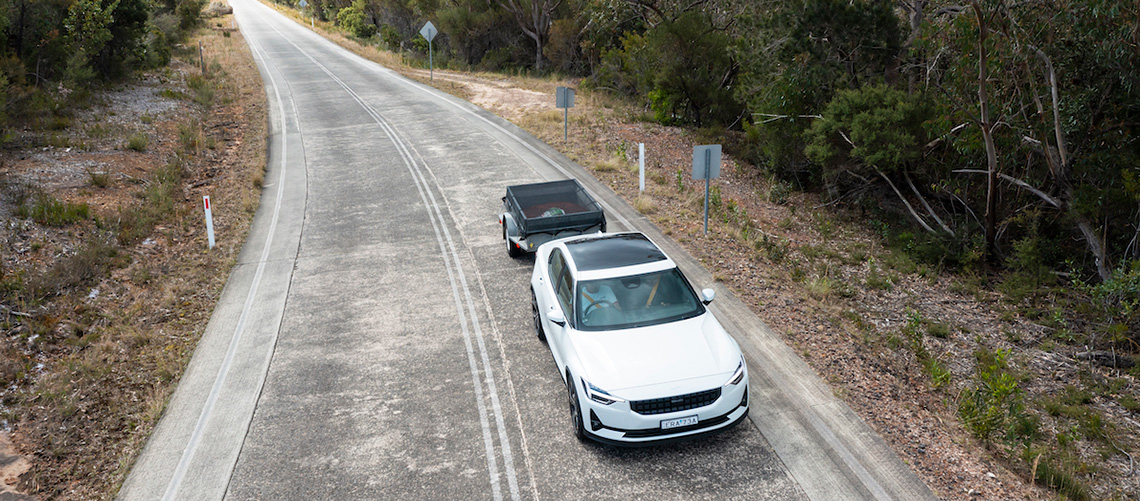
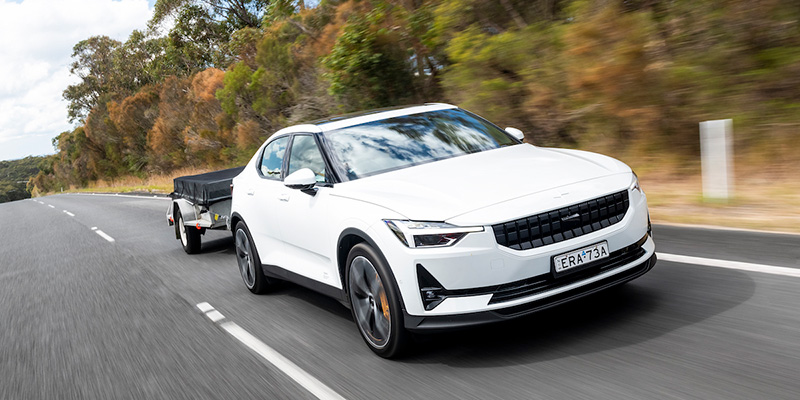
There’s a sense of momentum on the electric vehicle (EV) front, but as more models enter the Australian market and consumer interest grows, so do expectations. Price, range, charging times and charging infrastructure are still key concerns and, increasingly, questions are surfacing around an EV’s suitability to replace the current family car.
One issue we’re regularly asked to comment on at Open Road is an EV’s suitability for towing and how a load might affect driveability and range. New EVs such as the Hyundai Ioniq5 and Kia EV6 have a braked tow rating of a very handy 1600kg, making towing a trailer a realistic option.
To experience EV towing firsthand, we nabbed the new Polestar 2 long range dual motor, which has a tow rating of 1500kg braked and 750kg unbraked. We then sourced an unbraked single-axle box trailer with 213cm x 152cm dimensions. It’s a common type that sits in many suburban driveways and is often a courtesy trailer available at large DIY or garden outlets.
The trailer’s unladen weight was under 400kg and we opted for a 170kg load of woodchips from a local garden supply centre and 60kg of bagged products, which together weighed 230kg. Combining the load and trailer weight, it sat comfortably under the maximum permitted allowance of 750kg, but was representative of a typical load you might pick up for a weekend’s toil in the garden.
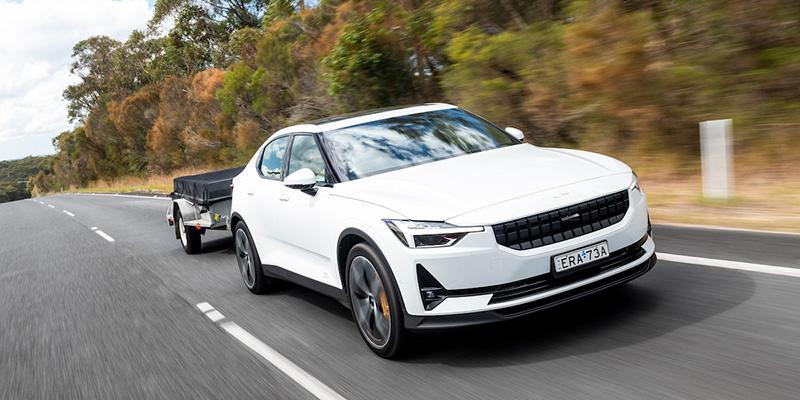
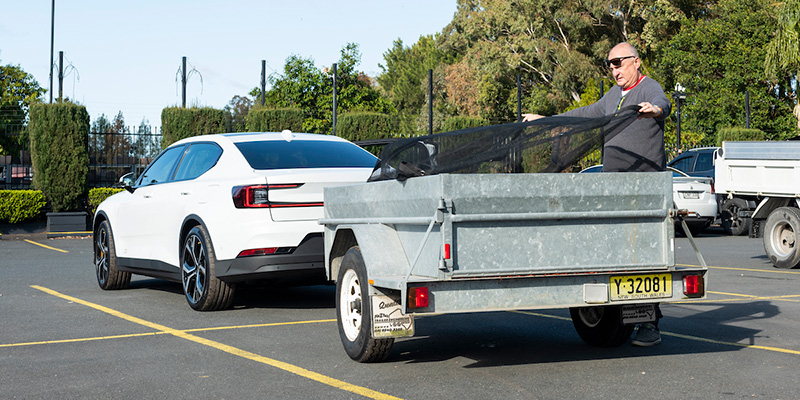
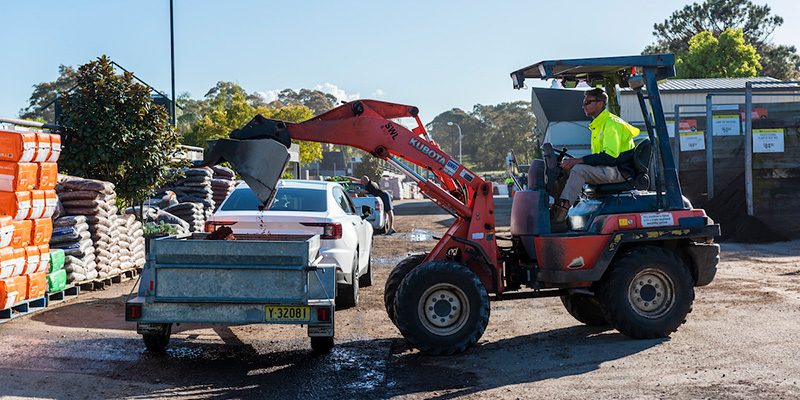
Our first task was to drive the Polestar 2 without the trailer over one of our favoured test routes. It took us south from Sydney out towards the southern highlands via the steep and winding Macquarie Pass, with a pitstop at Robertson, before joining the freeway north of Mittagong and returning to Sydney. The entire loop came to 240km, which was well within the Polestar 2 battery’s range of 400km provided after an overnight charge using its supplied cable.
While this version of the Polestar 2 is rated for up to a 480km range, 400km is the most we managed, and this is consistent with most EVs we have charged, where they fall short of their claimed figure.
The Polestar 2 remains a favourite of ours over these types of roads – it’s AWD and has 300kW and 650Nm at the driver’s beck and call. Its taut chassis made short work of the steep and twisting climb to Robertson and the Polestar 2 cruised effortlessly along the freeway on the return to Sydney.
Looking at the stats, we used 60 per cent of battery capacity with a remaining indicated range of 160km, while the trip computer showed a consumption of 18.7kWh for the journey. With a baseline established, we prepared for the same trip with the trailer in tow.
Following the same charging procedure, we started with an indicated 400km range and headed south. The trailer made a negligible difference to the Polestar 2’s performance; the only visual cue was the kWh display showing higher usage under acceleration at higher speeds.
The regenerative braking system was set in the standard position to maximise energy recovery and again the difference was trivial on both runs. Returning to our finishing point, we had used 83 per cent of battery capacity, with a remaining indicated range of 70km and the trip computer showing an increase to 26.5kWh energy usage.
Our Polestar 2 was factory-fitted with a semi-electric retractable towbar – a clever piece of engineering that’s only seen (or not seen!) on a few European vehicles sold in Australia.
Whenever it’s not needed, you can simply press a switch located inside the rear of the hatch cargo area and the tongue will disengage from the towbar and swing underneath the bumper. A firm push upwards locks it out of sight. Pressing the switch again disengages it, allowing it to swing down and be used once again.
A 13-pin round electrical connection is integrated into the design, negating the need for a separate connection mounted to the body. This system also makes it easier to stow luggage and, even more importantly, should mean no more skinned shins when doing so.
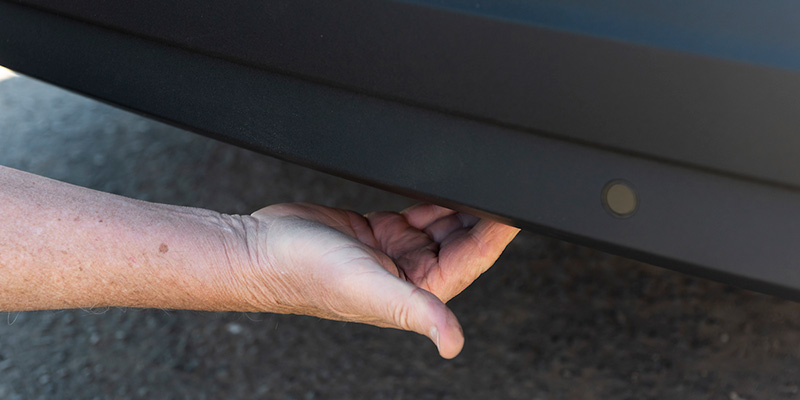
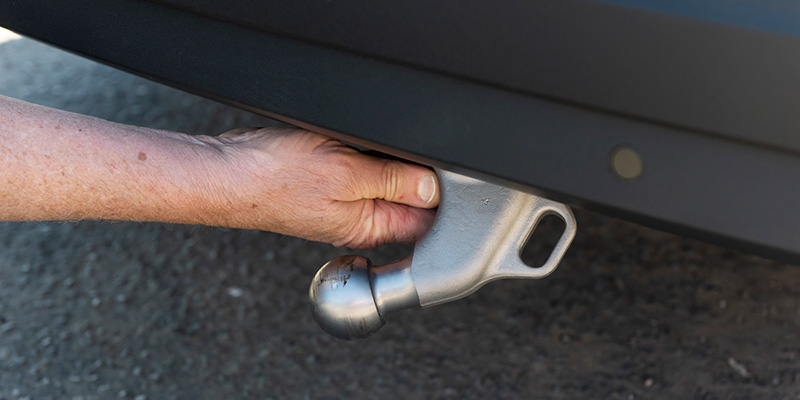
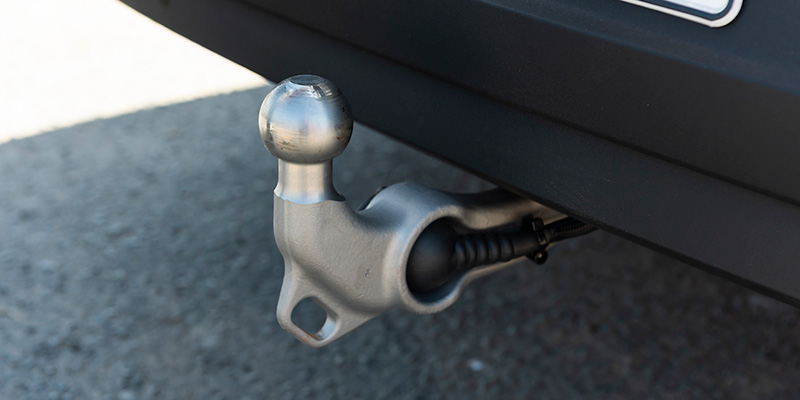
What did we learn? Firstly, in answer to the often-asked question, “Is an EV capable of towing a trailer?” Yes, it is. Larger EVs make great tow vehicles and the abundance of torque from take-off is a real plus compared to similar-sized internal combustion engine (ICE) vehicles.
We used 23 per cent more battery charge over the same journey with the trailer in tow, shortening range by 90km – which, if you’re mostly driving around town, isn’t much of an issue.
It’s worth noting the trailer we used caused minimal wind resistance, but a higher, enclosed trailer or a camper trailer cruising at higher speeds would likely increase energy use and reduce range. So, if you’re thinking of a longer trip in an EV towing a lightweight camper trailer, plan like it was a military exercise and make sure there are charging options at points you might normally drive past without a trailer.
It’s also worth keeping in mind that most public fast chargers are placed in locations where you’re required to park front or rear to kerb, making them harder to access with a trailer hooked up. You will likely have to unhitch and park in the appropriate bay to connect to the charger.
Towing a trailer with a conventional ICE-powered vehicle has an impact on fuel consumption and the experience is not dissimilar; the main difference is that most diesel and petrol vehicles have a range upwards of 600km, so the impact of towing on fuel consumption is less of an issue. In regional areas, service stations are more prevalent, too, although the NRMA is rolling out fast chargers in many rural NSW towns.
Images/Photography by Anthony Warry.